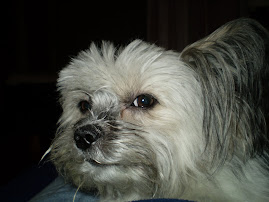
Suggestions
One of the most crucial tips a dog owner should know is that from their first days of puppyhood and into their adult doggy days, it is vital that the owner remains persistent and trains their dog to act towards them as they would want them to behave towards other people. When an owner permits the dog to jump up on him, the dog will not realize that is is not permissible to do the same to visitors. Likewise, should the owner permit the dog to lick his hands or face, it will not comprehend that it is not allowed to lick the hands and face of another person. The secret to training a dog successfully is persistence, teaching the dog what behavior is acceptable and praising him for his obedience regularly.
While the owner may believe that it is a wonderful thing for the dog to lick him when he comes home, evidencing excitement and attention, there are many better behaviors besides licking which are more apropos for the dog to exhibit. One approach an owner could use to prevent licking would be to ignore and avoid their dog each time they attempt to lick them. An owner needs to avoid any eye contact with their dog and ought not to pay any attention to them until the licking has come to a stop. As soon as a dog regains a tranquil disposition, the owner can then offer their dog commendation and consideration for behaving so well. Lest a dog should be prone to licking people's hands, the owner needs to stop this by retracting their hand and avoiding the dog entirely, thus providing the dog with a chance to calm himself down.
With reinforcement of the correct behavior, the owner is at the same time training the dog to stop licking when visitors come into the home. When the dog understands that he will not receive attention from the owner by licking him, it is unlikely that it will attempt to lick others when they are in the house. The dog owner also needs to inform others who come into their home of how they should respond when the dog tries licking them, displaying and bolstering those same manners that the owner implements to prevent licking.
Learn more at: stop dog licking.
Dog training is designed to increase the pet owner's satisfaction with their pet. James is a consultant who specializes in dog training methods, as for example stop dog licking.
Additionally, he studies the training of puppies in depth. He has also has great tips and a free guide to help you start your dog training: http://www.puppy-training-advice.com
Article Source: http://EzineArticles.com/?expert=James_John_Johnson










